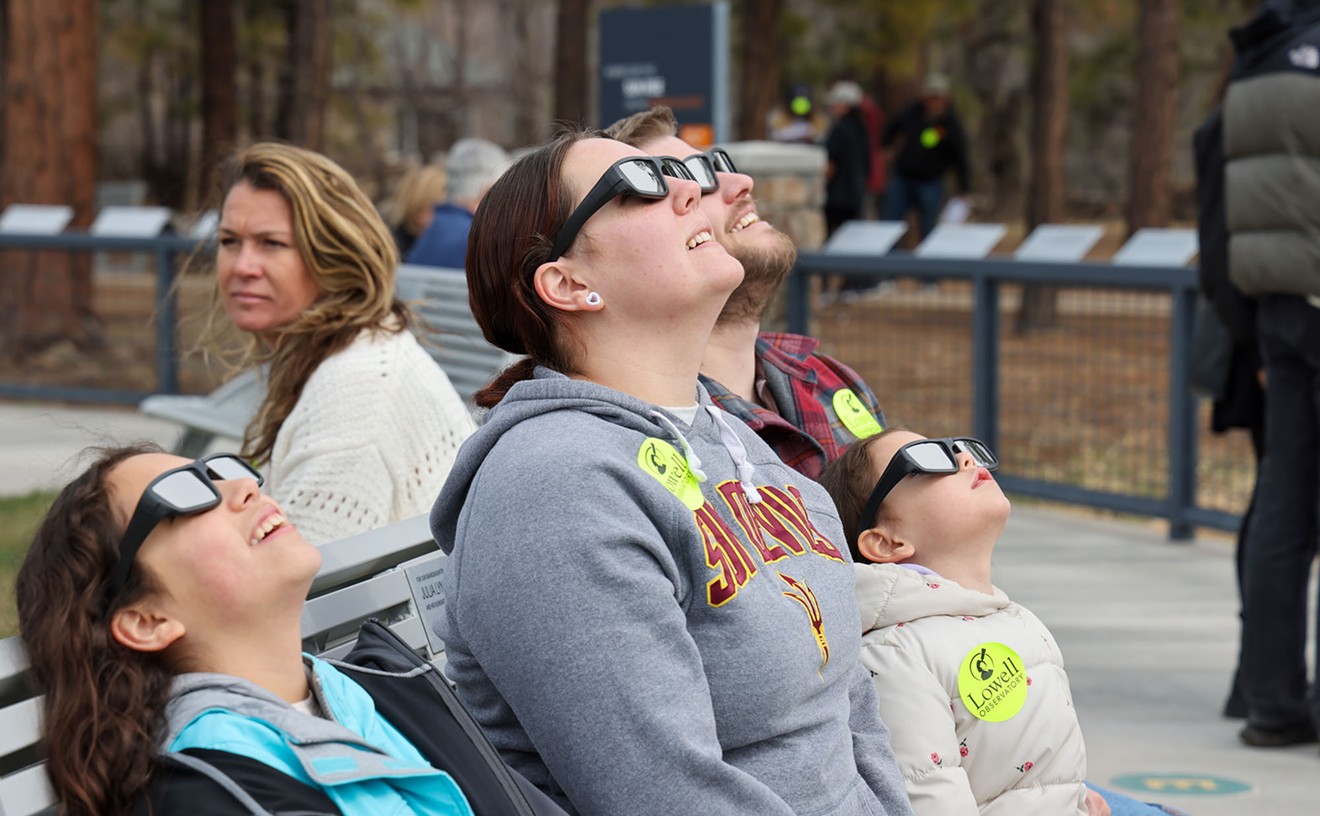An artist's private stash is generally the product of a good eye, good connections, and a willingness to let artist friends pay back loans and favors in artwork. Artists use their work as a sort of scrip, you see, particularly in their struggling years, making rent and settling bar tabs with their creations when they're low on cash. In later years, after they've landed a tenured teaching job and gallery representation, they frequently give their creations to friends and patrons as gifts. They also exchange work with colleagues because an artist can never, ever get enough art. Then there's the cool stuff artists spot in alleys or at garage sales, objects someone less aesthetically astute would have missed.
Valley art pioneer Rudy Turk owns just such an eclectic, amazing collection, and it's on display, along with his own paintings, at Mesa Contemporary Arts, at the Mesa Arts Center. During his 78 years on Earth, Turk, director emeritus of the ASU Art Museum, has amassed a wide body of work ranging from a wood and metal goose decoy by an anonymous artisan to an etching of a European noble by Eugene Delacroix. He bought 19th-century etchings in Paris; he acquired paintings as gifts from artists who exhibited at ASU during his time there; he unearthed folk art from God-knows-where.
"Rudy Turk: A Lifetime of Collection and Creation" re-creates that sense of aesthetic hunting and gathering by presenting work randomly. There's no attempt to place the paintings, pottery, prints and sculpture into historical context or even in chronological order, and the pieces are shown without the date of their creation. Turk's work is scattered among the work of other artists, without explanation. The informal approach makes the show feel more like a visit to Turk's home than a museum exhibition. Some of the pieces have personalized touches identifying them as gifts, adding to the show's intimacy, like the John Paul Jones oil and pencil piece on which Jones has written "For Rudy," the portrait of Turk by Fritz Scholder, and the collage created by Claribel Cone and mailed to Turk at an ASU address.
The exhibition offers up Turk as a man of diverse taste, a lover of all types of art with a soft spot for folk art and Picasso.
There are no Picassos in the exhibition, but several of Turk's paintings show the Spaniard's influence. El Toro, his undated painting of a massive red bull with prominent genitalia, comes off as an homage to the macho animals that appeared frequently in Picasso's work. The piece is all quick, confident brush strokes, flat, simplified forms and muscular black lines. There's not an extra mark anywhere; it's a lean, economical depiction done by a painter in his prime.
There's a wooden canoe prow from New Guinea, carved by an anonymous artist into the shape of a crocodile. The beast's teeth have been simplified into interlocking triangles, its scales into a grid of lines, and the bones of its head are depicted in rhythmic, flowing forms. The piece is a masterful bit of abbreviation, done by a primitive carver who possessed extremely sophisticated skills. It's the same sort of simplified form Turk uses in some of his own paintings, like the trio of Abraham Lincoln portraits that hang on the wall near the crocodile head. Look at Abe, look at the reptile, see the connection.
Other times there is no apparent connection between Turk's work and a displayed object --- like the washing machine agitator that hangs amid the paintings and prints. A placard identifies the aluminum disk ringed with a raised relief of delicate female hands as a "found object," but offers no more details. You can imagine Turk finding the machine part in a junkyard or in an alley at some point, thinking "Cool!" and then taking it home and putting it on a shelf until he figured out what to do with it.
Turk brings a collector's aesthetic to his own work, which over the years has taken cues from expressionism, the folk art of Mexico and the South Pacific, Matisse, and Picasso. He isn't so much a creator of original art as he is a gifted adopter of others' work. Like Madonna, who incorporates music and trends from the cutting edge of the club scene into her own Top 40-friendly singles, Turk is adept at spotting good stuff and putting it into his own work.
That's harder to do than you think.
Look at the tribal faces on the puzzlingly named yam stick from New Guinea that's part of Turk's collection. Then notice the resemblance between those South Pacific grimaces and Turk's oil portrait of the actor Ralph Fiennes hanging just across the gallery. Not everyone can look at a carved pole and see the raw materials for a celebrity portrait; it's a tribute to Turk that he connected these seemingly disparate dots.










